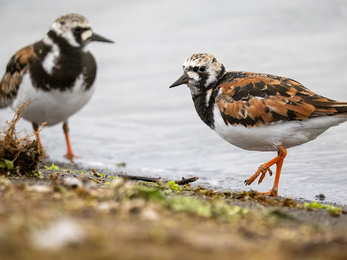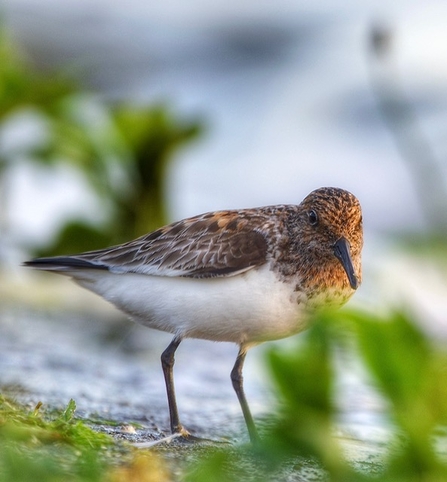

May saw 87 species recorded with the six additions taking the annual total to 124 which compares to 127 last year, 117 in 2022 and 124 again the year before. It could have been better if the three Cattle Egrets on the 9th and Hawfinch on the 19th which were both watched heading north from Walthamstow Marsh had been seen from the reservoirs.
May saw a good passage of black terns pic @EugeneDH_Bass
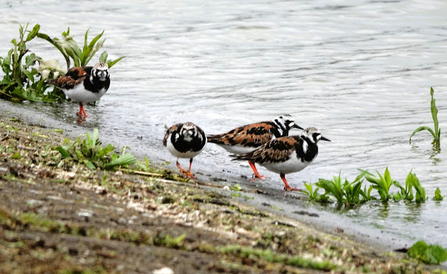
Turnstone arrived on almost the same date as last year pic @LolBodini
May is also, of course, the height of the breeding season at the Wetlands with greylag, canada and egyptian goslings everywhere. The first pochard and gadwall broods were seen and young Grey Herons from the 28 nesting pairs - the same as last year - were busy learning to fly or fish. Both kingfisher, which successfully bred on No 5 island again, and great spotted woodpecker were also busy feeding young. And the cold April does not seem to discouraged reed warblers from getting down to breeding with the first young bird caught in the No 1 reed bed on the 25th - a fortnight earlier than expected - which the team suspect may be among the first in the entire country.
But it was not such a happy story with barnacle geese. Last year's successful pair did produce one young on the 8th but the gosling sadly disappeared after just two days. Hopes are high that another pair are attempting to breed with up to 11 birds seen around No 5 and the neighbouring playing fields. Shelduck, too, are showing signs of breeding with four or five pairs chasing each other. For the second year running a party of shoveler turned up on the 20th - this time five compared to last year's four - with a pair on the 30th.
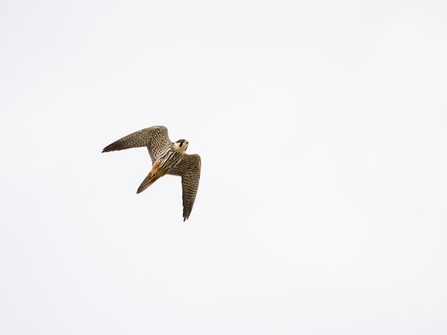
Hobby made regular appearances over the reservoirs pic @Elliott1758817
Red kites were recorded on five days - compared to just two last year - with two on both the 10th and 20th and three on the 4th. Buzzards were also slightly commoner with sightings on the 4th, 8th, 11th and 16th. So, too, were hobby with birds on six more days - four in total last year - after the first on the 4th.
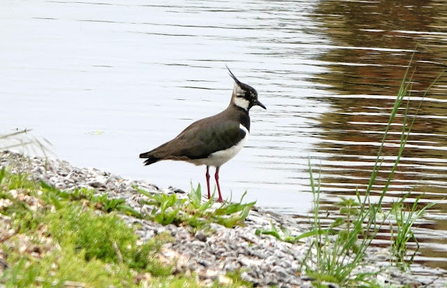
This lapwing was one of four wader species on the 21st pic @LolBodini
The good year for waders continued with nine species during the month. Oystercatcher were seen regularly with records on six dates including three together on the 6th. A lapwing spent the morning on Lockwood on the 21st, two days later than the sole record last year. Little ringed plover, which can be regular if they are trying to nest nearby, were only seen on the 3rd and 4th.
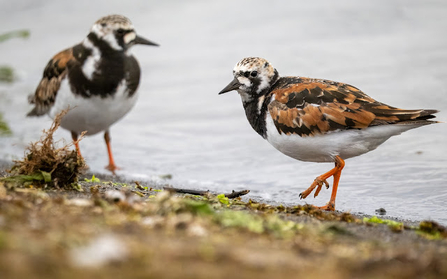
Turnstone @Elliott1758817
The month saw three Arctic-bound wader species - all on Lockwood - added to the year list. First was a single common ringed plover on the 18th. This was followed by four tame turnstone which arrived mid-morning on the 21st - a day later and a bird less in the flock than last year - which fed on the east bank for the rest of the day. This was the same for a summer plumaged sanderling which flew in early morning on the 23rd, a day later than the first record last year. It is the third year in succession that Sanderling has been seen after records in only four years in the previous decade.
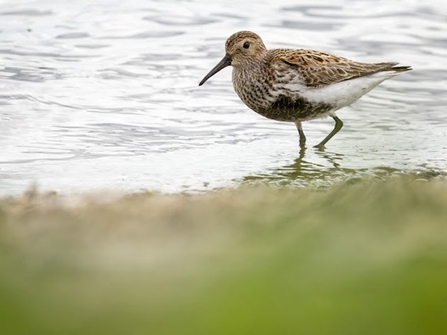
Summer-plumage Dunlin were recorded on four days pic @Elliott1758817
Single dunlin were recorded on the 3rd and 22nd and two on the 4th and 19th. Common sandpipers were seen until the end of the month but passage remained weak with five on the 1st the highest count compared to a peak of nine on the 27th last year. Following the first in April, additional greenshank were recorded on the 9th and 21st.
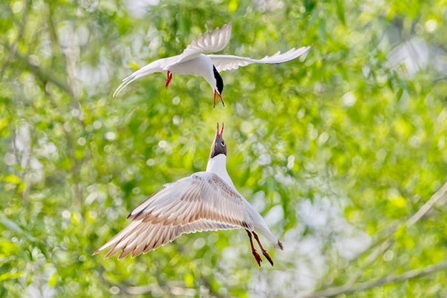
Neighbours squabbling pic @giles_greenwood
The first lesser black-backed chicks were seen on the East Warwick island on the 25th and the first young black-headed gulls on the Lockwood rafts eight days earlier. It is not clear whether common terns are again nesting on Lockwood with most birds in the northern half of the site seeming to opt to move to nearby Banbury. But it looks as if the replica terns on the rafts on West Warwick having encouraged several pairs to attempt to breed.
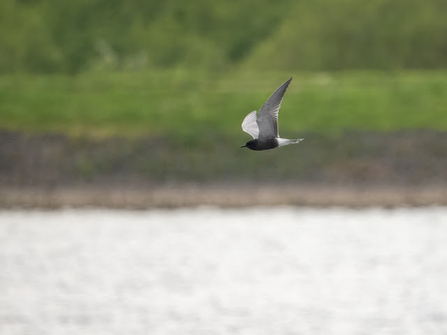
Black terns stayed faithful to Lockwood pic @Elliott1758817
After such a good passage of arctic terns in April, a final bird was seen on the 6th but the excitement continued with a strong showing by black terns. The first spent the day on Lockwood on the 4th before nine were found by EDH on the afternoon of the 10th which departed just before dusk with another single on the 12th. Last year, the only Spring record were three on the 27th.
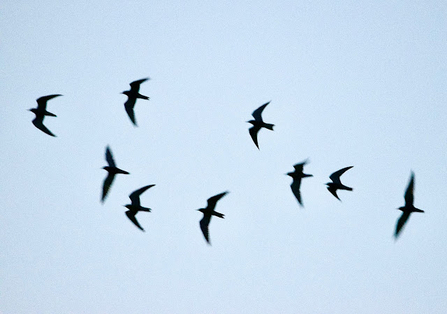
The Black Tern flock departing at dusk pic @HarringayBirder
The wonderful call of the cuckoo has thankfully become slightly more frequent after a period a decade ago when the species was a genuine rarity. The first was seen and heard on the 4th with further records on the 6th, 21st and 25th when a male spent the morning on the south side. It would be fascinating to know how far swifts travel to feed over the Wetlands. Given that it was estimated that a thousand could be seen on overcast days this month over the reservoirs and filter beds, it must be a long way. Swallows continued moving through late into the month, as they did elsewhere this year, with 20 brought down by the rain on the 22nd, ten next day and still two on the 24th.
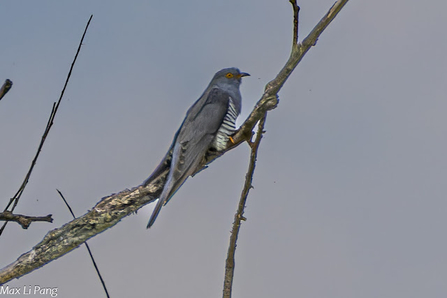
This male cuckoo spent the morning calling pic @MLP
Wheatear passage continued to be light with records on just six days with an peak count of two on the 15th and the last on the 22nd - eight days earlier than last year. But it was the opposite for yellow wagtails which, after a strong showing in April, were recorded on the 2nd, 3rd, 6th, 7th, 8th, 13th with the last on the 18th. They included a smart Blue-headed form found in the mist on the 3rd by visiting birder MR who was working up to his discovery of the UK's first ever Indian Golden Oriole a few days later in Northumberland. The last record of the Blue-headed form, also on East Warwick, was in 2018.
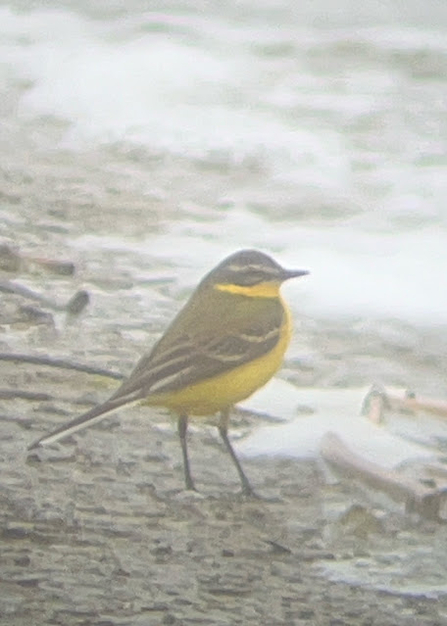
A smart blue-headed wagtail in the mist pic @readbirdphotos

